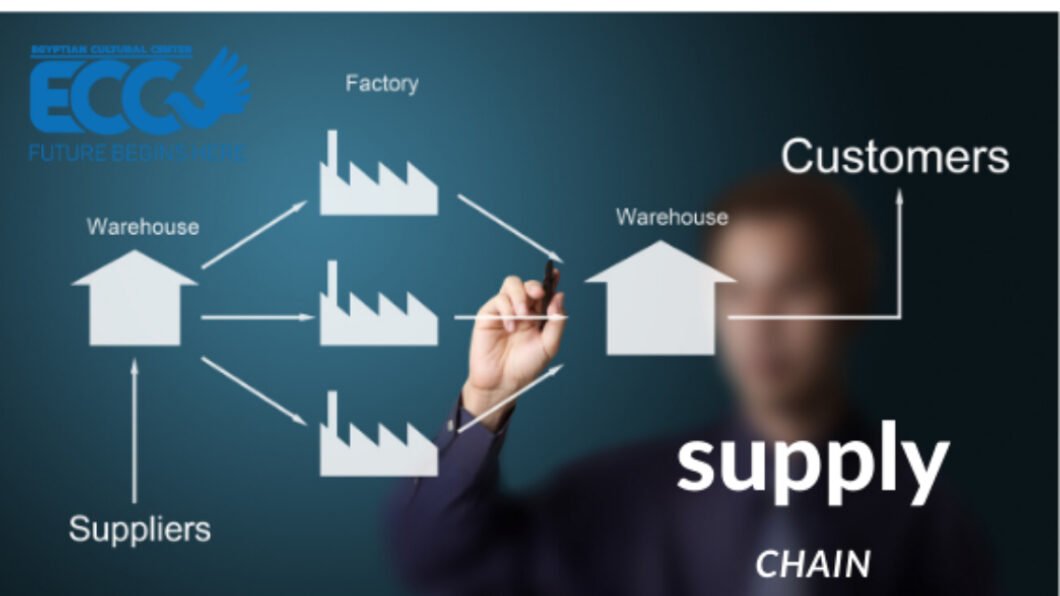Many researchers have different point of views regarding the implementation of Supply Chain Strategies, which made the supply chain analysed in many ways. It was recognized in the past with quite a lot of definitions as relationship marketing, value chain, and industrial networks. However, the Japanese philosophies developed supply chain management, due to the infinite increase of technology and fierce competition. However regardless of those different views and definitions they all contribute to the same objective (Croom et al. 2000: 69) (Rose et al. 2012:7).
Supply chains connect different activities together such as producing, transporting, purchasing and selling of goods that fulfil the customers‟ growing needs (Slack and Lewis, 2008: 69-108) (Ganeshan and Harrison, 2002: 1-2). These goods either Products or services, are linked to each other trough upstream and downstream linkages that serve all the business processes involved. These linkages spread between the suppliers of raw material, end consumers, stockholders and stakeholders. Furthermore, these linkages are based upon the integration and incorporation between the flow of knowledge, information and goods (Hwang, 2012: 127-137) (Slack and Lewis, 2008: 69-108).
The management of the previous variables is very important for having an efficient Supply Chain Strategy (Hwang, 2012: 127-137) (Rose et al. 2012:7) (Slack and Lewis, 2008: 69-108). However, the main purpose of applying a Supply Chain Management Strategy is to maximize profits, reduce costs and satisfy the end customers. Moreover, this integrated relationship between business processes gives the firm a great portion of consistency and dependency (James, A., 2012: 194-195) (Croom et al. 2000: 69).
Therefore, the main reason of this paper is to analyse and understand the high importance of Supply Chain management Strategies implemented by multinational companies, and if there is a general Strategy that can be used as a role model for all companies.
Defining Supply Chain Management
There are numerous different definitions for the phrase supply chain management. However, numerous authors have agreed that supply chain is group of procedures, actions and activities that generates, builds, ensures and maintain the availability of products, goods or services to customers an end consumers. (James, A., 2012: 194-195) (Croom et al. 2000: 69) (Rose et al. 2012:7). Supply chain management focuses on the way that organizations exploit their suppliers‟ processes, knowledge, and capacity to improve its competitive advantage (Hwang, 2012: 127-137). It does not concern one part only; Supply chain interacts with other divisions in the company like information systems marketing and finance in order to achieve wanted performance inside the organization (Rose et al. 2012:7).
There are three key stages of Supply Chain: purchasing, transforming and distributing. First, purchasing which is the actual purchasing of raw materials from local or international markets. Second, transforming is when those raw materials are turned to a product or a service that the end consumer will make use of. This transformation is either made in the organization‟s house or outsourced. Finally, distribution is where the finished products are spread in the market and becomes available in the consumers‟ hands. Those three stages are synchronized to satisfy end consumers through reducing the cost of order and manufacturing cycles, reducing the costs of producing products, increasing revenue by promoting outstanding customer satisfaction and providing the bases for future innovation (Hwang, 2012: 127-137) (Ganeshan and Harrison, 2002: 1-2).
All of this shows that the most important concern of supply chain management is to generate a high-performance business model through coordinating business functions through up-stream and down-stream linkages (Hwang, 2012: 127-137).
An example of such coordination is represented in a situation where supply chain is synchronizing a procedure across marketing, sales, finance and other departments within the organization (Croom et al. 2000: 69) (Ganeshan and Harrison, 2002: 1-2).
Components of Supply Chain Management
(Russell, S, 2009) stated that the mechanism of modern supply chain consists of five components. Lean logistics and lean manufacturing representing the first two components in the mechanism. Moreover, he also stated that the reason behind introducing lean logistics and lean manufacturing is to build some kind of an agreement with business allies that gives the opportunity for all parties in the chain to exchange information and knowledge regularly. The target of this agreement is to boost the awareness, responsiveness, effectiveness and efficiency of operations (Croom et al. 2000: 69-72).
Alliances formed between businesses parties is the third component. These Alliances represent the flow of information between all partners in the chain through up-stream and down-stream linkages. Moreover, supplier relationship with the company does not just stop with providing supplies, but also offer various solutions for problems faced by the company (Croom et al. 2000: 69-72) (Russell, S, 2009, 59-60).
Fourth is the Information Technology as the most important component, because it is the back bone of supply Chain Management. Information technology has given organization and multi-national companies the opportunity to cooperate and collaborate with each other. (Russell, S, 2009, 59-60).
Last but not least, integration of key business processes. This is final component of supply chain mechanism. This is also a very important component because it this whole supply chain operational (Croom et al. 2000: 69-72) (Russell, S, 2009, 59-60).
Goals and benefits of Supply chain management
There are many goals and benefits of Supply chain Management. One of the primary goals is to fulfill consumer needs and demands through the using resources efficiently and effectively (Hwang, 2012: 127-137). This can be achieved by the proper distribution of capacity, inventory and labor. The Author stated that the reason behind implementing supply chain is to match the demand with the consumer’s supply and do so while using the least inventory needed. This can be achieved by regulating the production schedule, focusing on the bottle neck problems, decreasing the inventory and limiting the lead time as much as possible through reducing the bullwhip effect which will definitely reduce the holding cost of inventories (James, A., 2012: 194-196).
Normally, if a company was able to achieve the goals of supply chain management, the company will be rewarded with its benefits and exploit them to the company’s advantage. First things first, reduced inventory investments and holding costs. This gives the company the chance to save the funds until needed. Second, increased customer satisfaction due to exceptional quality and reduced costs. Finally and most important, the opportunity to have a competitive advantage as supply chain management provides the capability and capacity to be precise so the company can reach the market first before its competitors customers (James, A., 2012: 194-196) (Croom et al. 2000: 69-71) (Rose et al. 2012:7-9).


